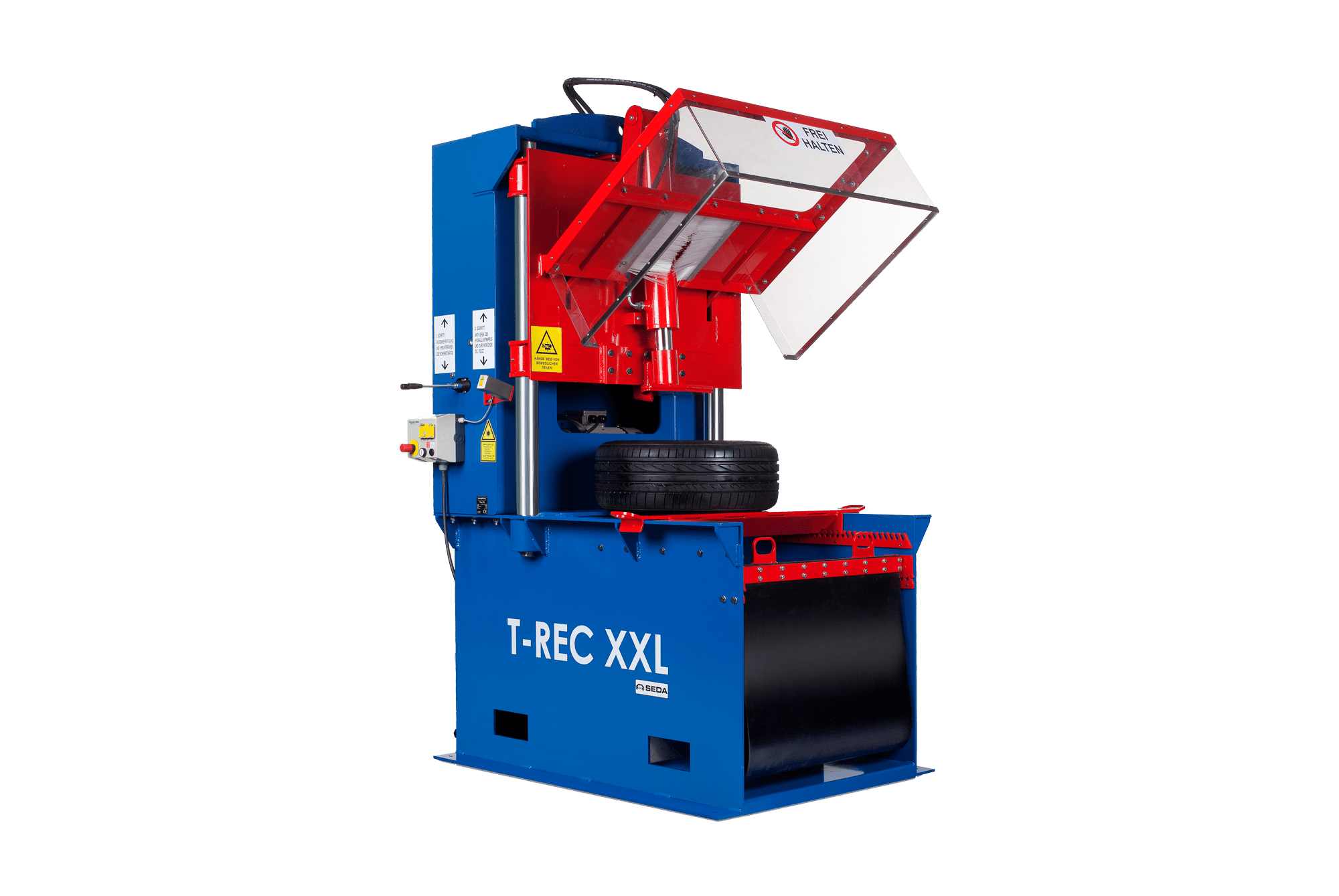Tire Recycling up to sizes of 22 inches
T-REC stands for tire recycling – the separation of tires from rims. Simple and well-thought-out developments impress not only through their power and size. The destruction of the rim (aluminum and steel) and the tire is guaranteed 100%. With the T-REC XXL, all tire types up to a size of 22 inches can be processed.
Categories
Systems
Airbag Recycling
Glass Recycling
Tire Recycling
Storage
Tire Recycling Made by SEDA
For effective tire recycling, the process of separating the tire from the rim must first be optimized. Both components follow completely different paths during the recycling process, but the tire is naturally very securely connected to the rim, which increases the effort required for separation. It is estimated that over 13 million tons of tires are dismantled worldwide annually. Due to the large quantity and extremely long lifespan, tires present a major challenge to the economy in terms of managing end-of-life tires. After a certain period, a tire needs to be replaced and subsequently enters the tire recycling process. This is usually because the tire is no longer usable, either due to insufficient tread depth or because it has become brittle with age. If only the tread is worn out, tire recycling can involve retreading, where the tread is stripped, the carcass is inspected, and a new tread is applied. This process is rarely used for passenger car tires due to its complexity but is common practice for truck tires.
Tire recycling begins with the separation of rim and tire
To separate car tires from the rim, special equipment like the SEDA T-REC XXL is required. Various features make this process much easier, such as shatter protection and the safety two-hand operation. This allows a complete wheel to be dismantled in just a few seconds, after which the actual tire recycling process can begin.
From an ergonomic perspective, the T-REC XXL Feeder is a particularly helpful tool. The tedious task of tire dragging is a thing of the past.
Versatile granulate
In material recycling of end-of-life tires, the tires are broken down into their individual components and separated. These components—such as rubber, steel, textiles, and the residue (e.g., tread stones)—are then reused separately instead of being mixed, burned, or gassed as is often the case. Tire recycling is a complex process. In Germany, for instance, half of the waste tires are burned as an alternative fuel in the cement industry. When the individual components are cleanly separated, the rubber can be used in many applications. Examples include its use as an additive for asphalt or as filling material in artificial turf. Rubber granulate can also be used as flooring in sports fields or for horse riding areas. The resulting steel can be re-melted.
The properties that make tires a challenge for waste disposal, such as the textile fibers, also make them a valuable fuel. These textiles increase the overall calorific value when added to combustion materials. Special machines are required to process the rubber components of end-of-life tires into rubber granules, which involves sieving and shredding the material.
